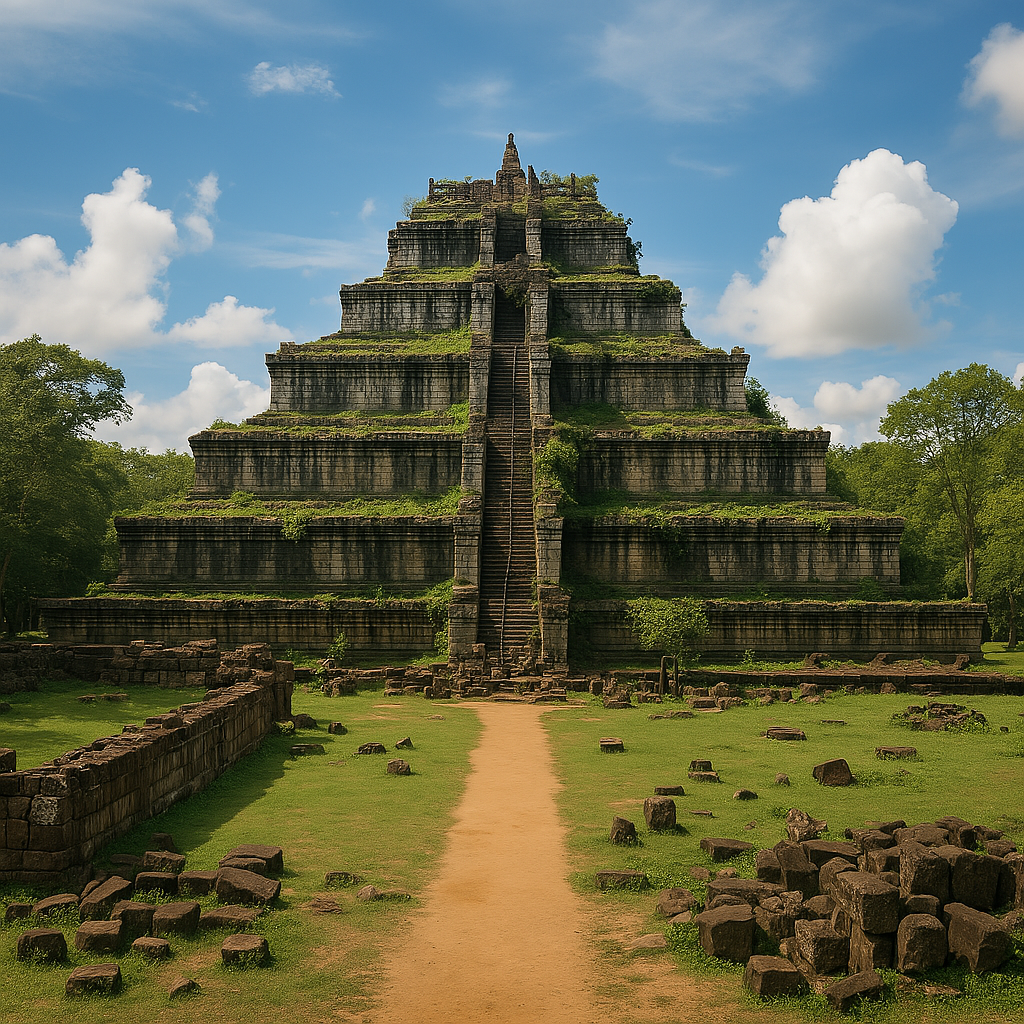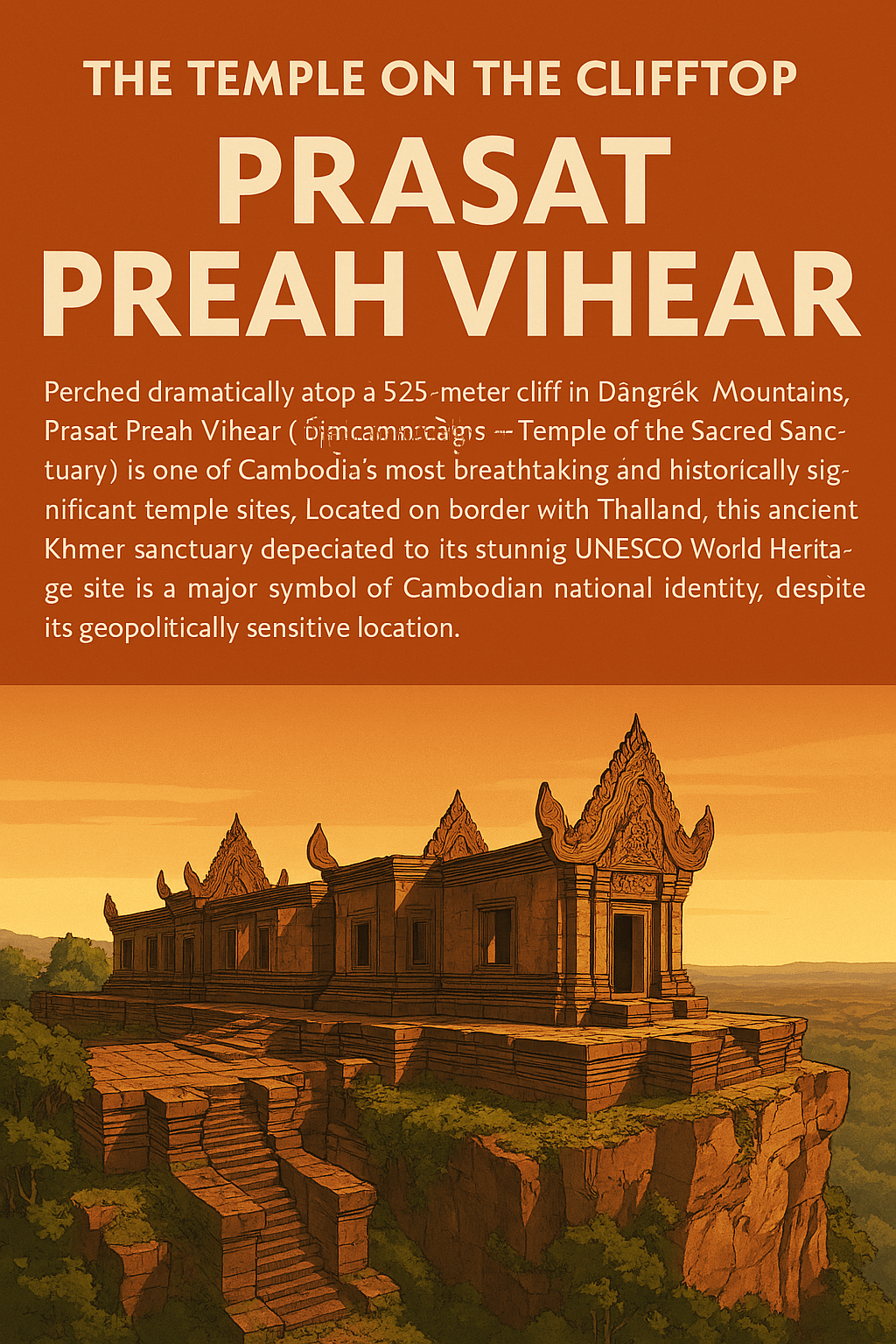While the majesty of Angkor Wat and the mysteries of Bayon rightly capture global attention, Cambodia’s landscape is rich with countless other ancient temples and significant landmarks that offer profound insights into the depth and evolution of Khmer civilization. Exploring these lesser-known sites provides diverse experiences, from discovering pre-Angkorian capitals to venturing into jungle-clad ruins and scaling sacred mountains. Here are brief introductions to just a few notable examples, representing the vast heritage cherished by Cambodians across the nation, including those residing in provinces like Battambang.

1. Sambor Prei Kuk (Kampong Thom Province)
Before Angkor rose to dominance, the capital of the Chenla Kingdom (roughly 6th-8th centuries AD) flourished at Sambor Prei Kuk. Inscribed as a UNESCO World Heritage site in 2017, this sprawling complex features numerous brick sanctuaries scattered amidst forest settings. Its architectural style is distinctly pre-Angkorian, characterized by unique octagonal towers, elaborate brickwork, intricately carved sandstone lintels, and distinctive decorative elements sometimes referred to as “flying palaces.” Visiting Sambor Prei Kuk offers a crucial look at the artistic and political roots from which the later Angkorian empire emerged.
2. Beng Mealea (Siem Reap Province)
Often dubbed the “Indiana Jones temple,” Beng Mealea provides an atmospheric adventure for temple explorers. Located about 40 km east of the main Angkor group, this massive temple, likely built in the early 12th century under Suryavarman II (the builder of Angkor Wat) and sharing a similar floor plan, has been largely left unrestored and surrendered to the jungle. Collapsed galleries, tangled tree roots weaving through sandstone blocks, and encroaching vegetation create a powerful sense of discovering a lost world. Wooden walkways have been installed to allow visitors to navigate the sprawling ruins safely while preserving the evocative ambiance.
3. Phnom Chisor (Takeo Province)
Perched dramatically atop a prominent hill south of Phnom Penh, Phnom Chisor offers both historical significance and breathtaking views. Reaching the summit requires climbing a long staircase, rewarding visitors with a well-preserved 11th-century temple complex primarily built under King Suryavarman I. Originally dedicated to the Hindu deities Shiva and Vishnu, the temple features structures made from laterite, brick, and sandstone, including impressive sanctuary towers and libraries. The panoramic vistas over the surrounding plains of Takeo province are a major highlight.
4. Wat Nokor (Kampong Cham City)
Wat Nokor presents a unique and fascinating blend of ancient and modern religious life. Situated within the grounds of a vibrant, active Theravada Buddhist pagoda in Kampong Cham city lies the substantial ruins of an Angkorian temple dating likely from the late 12th or early 13th century, possibly under Jayavarman VII. Built mainly of black sandstone and laterite, the original temple exhibits Mahayana Buddhist influences, including some Bayon-style elements like remnants suggesting face towers. The juxtaposition of these ancient, weathered structures with the brightly colored buildings and ongoing activities of the modern pagoda creates a striking visual and cultural experience.
5. Phnom Kulen (Siem Reap Province)
Phnom Kulen is more than just a mountain; it is a vast, sacred plateau considered the birthplace of the Khmer Empire. It was here, in 802 AD, that Jayavarman II performed a sacred rite, declared independence from “Java” (likely meaning the Srivijaya empire or another regional power), and proclaimed himself Devaraja (God-King), initiating the Angkorian era. Today, Phnom Kulen is a popular pilgrimage and recreation site for Cambodians, known for its beautiful waterfalls cascading over rocks, lush jungle scenery, and numerous archaeological sites. A major attraction is the Preah Ang Thom pagoda, housing a huge reclining Buddha carved directly into the top of a massive sandstone boulder.
6. Kbal Spean (Siem Reap Province)
Located within the Phnom Kulen massif, Kbal Spean, often called the “River of 1000 Lingas,” offers a unique glimpse into Angkorian hydraulic spirituality. Reached via a pleasant jungle trek (approx. 45 minutes), the site features intricate carvings made directly into the sandstone bed of a stream. Dating mainly from the 11th to 13th centuries, these carvings include hundreds of lingas (phallic symbols of Shiva) and yonis (their female counterparts), as well as depictions of Hindu deities like Vishnu reclining on the serpent Ananta and Brahma. The belief was that the water flowing over these sacred symbols became holy and fertile, blessing the lands and rice paddies downstream towards Angkor.
Conclusion
These six locations represent only a small sample of the incredible wealth of historical and cultural landmarks scattered throughout Cambodia, beyond the main Angkor Archaeological Park. From the pre-Angkorian brick towers of Sambor Prei Kuk to the jungle embrace of Beng Mealea and the sacred heights of Phnom Kulen, each site offers a unique story and a different perspective on the vast timeline and diverse expressions of Khmer civilization. Exploring these lesser-known gems provides a richer, deeper understanding of Cambodia’s past, a heritage that continues to shape its present and is valued immensely across the kingdom as of April 2025.





